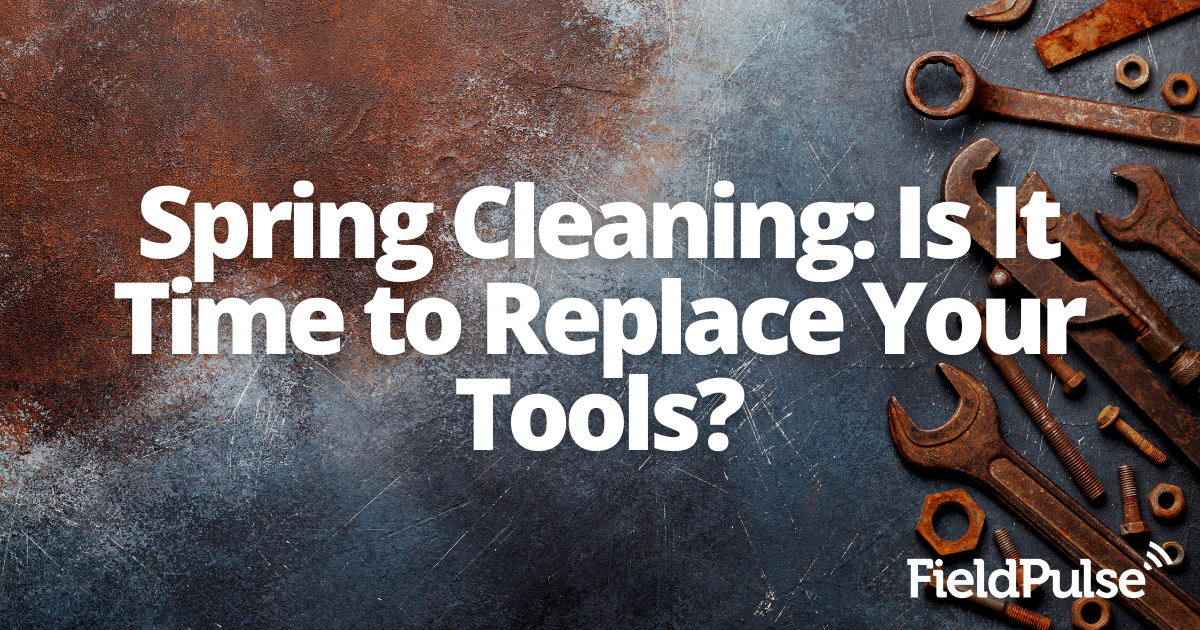As a tradesman, your tools are your livelihood. Having great quality tools can make the difference between a successful job and a catastrophe, and no one wants that!
That said, even top-of-the-line tools don’t last forever. It’s important to know when it’s time to say goodbye and move on to something new. Not only is it important to be able to tell when your tools need to be replaced, but it’s also important to know when you can repair a tool instead of replacing it. Repairing instead of replacing can save you a few bucks, and everyone wants that!
If you’re too attached to your favorite tools to see just how decrepit they really are, use this guide to help you know when it’s time to repair or replace.
It’s Quiz Time: Questions to Ask Yourself
To stay as objective as possible, try asking yourself a few questions about the state of your toolbox. That way, your loving attachment to your beloved wrench won’t get in the way.
- How old is my current equipment? Am I overdue for a replacement? There’s no set standard for how long tools should last, but if you’re still using a drill from the Jurassic era, you might want to consider a replacement.
- Are there newer products that offer improvements in performance or safety? The industry is doing a great job of making new products more efficient and safe, so take advantage!
- Would those newer products solve problems you’ve encountered with older products? Maybe your old hacksaw takes 20 minutes to saw through a PVC pipe. Getting newer products could eradicate these issues and make you look a bit more professional in front of your customers.
- Have you noticed visible flaws? Do an inspection of your tools every so often to look for critical issues. That way, you should catch problems early on before they completely break the tool.
- Do you have extra money lying around? You shouldn’t be spending money just because you have it. That said, if you have been doing well and you have a little extra cash, why not consider an upgrade to power up your performance? To know if you have the money for new tools, use an app like FieldPulse to track your expenses.
- Do your customers roll their eyes when you pull out your rusty, corroded gear? Appearances can make or break how a client feels about you, even if you do a stellar job. Shiny new tools just look better than gear that has seen the turn of the century (and we don’t mean the 21st century).
Should You Repair or Replace?
You’ve made the decision that something needs to be done about your tools — now, should you repair or replace them?
One good method to consider is the 50% rule. If repairs will cost at least 50% of the cost to replace, then go for the replacement. So if your power drill is on the fritz and will cost $100 to fix up, but the price of a new one is $200, you’re better off just buying a new one.
You also need to think about the current value of your tool. It won’t be worth what you originally paid because of depreciation, but it still might have enough value to make it worth replacing. This is especially true of more expensive tools that would be more of a financial burden to replace.
Finally, consider the age and warranty of the tools. Some companies offer lifetime warranties, but this is rare. Something like a three-year warranty is more common. Always check to see if repairs might be covered before moving on to a replacement.
How to Repair and How to Discard
Ready to attempt some repairs on your own? Great, because there’s actually pretty much you can do to salvage tools before chucking them in the trash. And don’t worry — if things go awry, just follow our instructions for old tool disposal.
So, what are some typical tool problems you can fix? They might include:
- Soldering on a new or patching up an old power cord.
- Clearing away rust.
- Getting new brushes.
- Switching out batteries or repairing broken power switches.
- Sharpening blades.
- Getting a new chain or drive belt.
Whatever you decide to do, we heartily recommend watching a tutorial or reading up on how the process works before starting. Unless you purposely want to mess up so you need to buy new tools, that is.
If your repairs don’t work (whether it was on accident or on purpose), don’t just toss your old parts in the garbage. There’s a proper way to dispose of metal and other delicate items! You don’t want to put your garbage person in the hospital because a rusty saw blade jabbed them in the leg.
See if you can donate old parts like saw blades or untreated wood to a location organization. While plastic or treated wood can’t be recycled, you may be able to reuse these in creative ways or donate them to an artist looking for raw materials.
It’s Tool Time!
There’s a ton you need to consider before parting from your time-tested hardware! Be sure to ask yourself all of the questions from our above list to know whether or not your tools are still useful for you.
If you do realize that your tools are lackluster, your next step is to consider whether to repair or replace. Generally, it’s a better idea to replace if repair costs are more than 50% of the tool’s value.
You may want to try your hand at DIY repairs — just make sure it’s something you can handle on your own. If your fix isn’t successful or you end up buying new things, also be mindful of how you dispose of your old tools.
When buying new tools, make sure you’re tracking all of your expenses! FieldPulse is an easy way to do this, as our management app lets you tabulate expenses without attaching them to a specific invoice. Want to learn more? Schedule your demo today or jump straight into a seven-day free trial!


